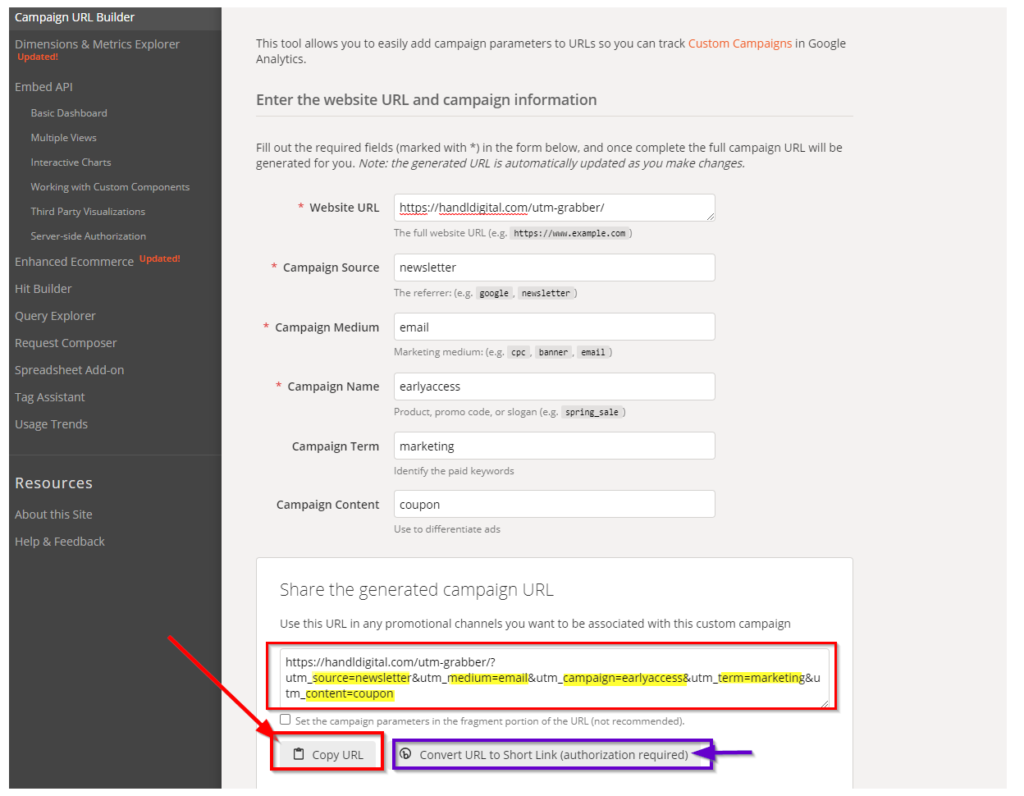What are UTMs, exactly?
UTM is short for Urchin Tracking Module. They allow you to keep track of your traffic–the people reaching your website, and whether those visits convert into sales or leads.
These function as tags added to the end of an URL to measure marketing performance. They tell the story of how your traffic is reaching you.
There are five parameters to be considered when filling in the information; three that are mandatory, and two that are optional.
- Source: This parameter is supposed to refer to the outside source that your traffic is coming from–the platform your link was put onto. (Mandatory)
Example: utm_source=Facebook
- Medium: Medium is broader than Source, it refers to the general marketing channel your link was on. Social Media, Email, and other broad terms. (Mandatory)
Example: utm_medium=socialmedia
- Campaign Title: The campaign title parameter allows you to identify and track the performance of a specific campaign. (Mandatory)
Example: utm_campaign=earlyaccess
- Term: Term parameter, keyword parameter helps to identify the visitor clicks through individual products that you are targeting. (Optional)
Example: utm_term=software
- Content: The content parameter is used to identify the widget in the email, on your advertisement or promotion that was clicked through. You can use utm_content tag with two identical links on the same page with different descriptions. (Optional)
Example: utm_content=headerlink
URLs with UTMs, what do they look like?
It’s likely you’ve seen them before, even if you’re not yet aware. Whenever you see a long link with a seemingly endless string of text at the end, it’s probably an UTM-Tracked link, something like this:
http://yourURL.com/landingpage?utm_campaign=earlyaccess&utm_medium=socialmedia&utm_source=Twitter
Of course, that link won’t take you anywhere, it’s just representation of what an actual UTM-Tracked link would look like. Everything that comes after the ‘?’ serves only the marketer as a means to collect data–it won’t affect user experience in the slightest. It might scare them off with its sheer extension, though; that’s why links with UTMs are usually put through link shortening tools as well, making them much more palatable to the spectator while retaining their marketing usefulness.
How to add UTMs to a link:
It’s rather easy to add UTMs to an URL:
First off, you should open Google’s Campaign builder. From there, you need to add your website’s URL without any UTMs into the first box, and fill the following with whatever parameters you’ll want for each category.


